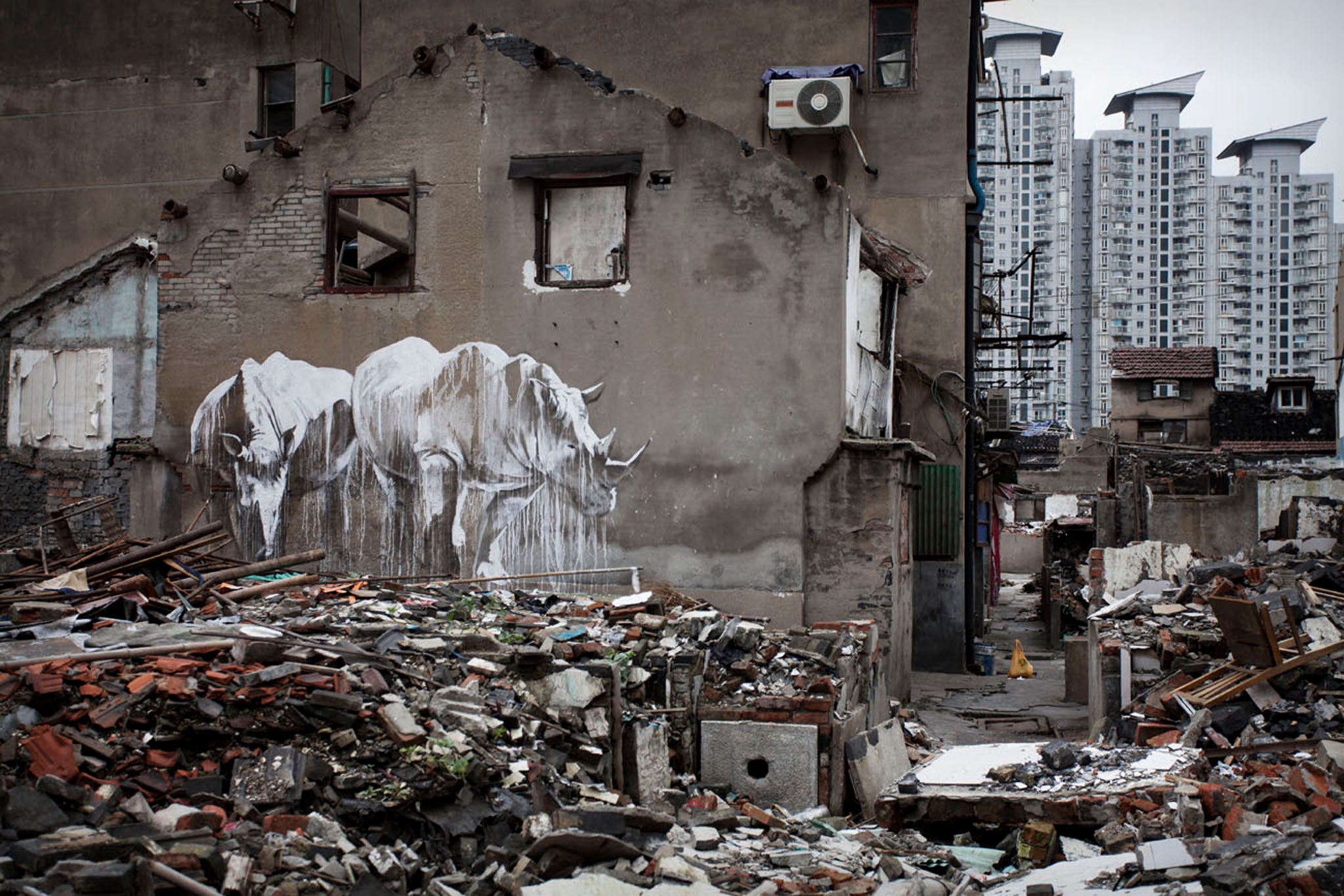In search of a female Banksy: Aiko and Faith47 take on a male-dominated street art world
The street art scene has always been a male preserve, but now a new generation of women graffiti artists are making a name for themselves

Your support helps us to tell the story
From reproductive rights to climate change to Big Tech, The Independent is on the ground when the story is developing. Whether it's investigating the financials of Elon Musk's pro-Trump PAC or producing our latest documentary, 'The A Word', which shines a light on the American women fighting for reproductive rights, we know how important it is to parse out the facts from the messaging.
At such a critical moment in US history, we need reporters on the ground. Your donation allows us to keep sending journalists to speak to both sides of the story.
The Independent is trusted by Americans across the entire political spectrum. And unlike many other quality news outlets, we choose not to lock Americans out of our reporting and analysis with paywalls. We believe quality journalism should be available to everyone, paid for by those who can afford it.
Your support makes all the difference.Street art has always been a male-dominated scene, but an increasing number of female artists are helping to change that. In the past three years, street art by Bambi, dubbed the “female Banksy”, has appeared in London, and in Paris, Princess Hijab has scrawled burqas on to the faces of adverts on the metro.
Click here or on 'view gallery' for more images of Aiko and Faith47's work
Martha Cooper, an American photographer who has been documenting graffiti since the late 1970s, and who is widely thought of as the “godmother” of street art, says she has noticed an increase in the number of women participating in the scene.
“There’s definitely more women now. Before, women might have made up one 10th of a per cent, and now maybe it’s one per cent. Street art is very democratic in that anybody can do it, and quite a few women that do it are good at it.”
Cooper names Japan-born Aiko as one of the rising female stars of the street-art scene. After collaborating with Banksy in his film Exit Through the Gift Shop in 2005, her work has appeared in Los Angeles, London, Shanghai, and Stavanger, Norway, where she is currently exhibiting at Nuart street-art festival.
It is clear from her murals of glamorous pin-up girls painted in pinks and purples with glitter that Aiko is not afraid of creating overtly feminine art. She says she enjoys being able to make a statement about women in a way that her male contemporaries can’t.
“I have one subject that guys cannot talk about. Guys can paint sexy ladies that they want to fuck but the female figure is ours; it’s also for us to enjoy. It’s nothing against boys; I’m just celebrating female energy,” she says.

Despite her clear female aesthetic, Aiko says she has never experienced any prejudice for being one of the few women street artists.
“I’m treated really well on this scene,” she says. “I’m working hard so the men have started to recognise me as one of the top five women street artists on the planet. I have to keep going and showing them I can paint.”
Although she is aware her petite frame can have physical limits when painting on a large scale outside, she says she is only spurred on by watching her male peers.
“These guys are hardcore. They go into tunnels full of dust and dirt, and they still paint in heavy weather. I went to an all-girl Japanese high school where we were taught good manners and how to sew – it’s a totally different world. I was painting outside a few days ago and there was tough rain and wind, but I still wanted to paint.”
Despite being one of the most successful women on the scene, Aiko does not want to be labelled a “female” street artist. South African artist Faith47, who is exhibiting at Nuart alongside Aiko, feels similarly. “My attitude has always just been that I focus on my work and not what race or gender I am,” she says. “It’s all about the work so I intentionally don’t see my gender as an issue.”

Faith47, who first started doing traditional graffiti on the streets of Cape Town back in 1997, says that she has never felt excluded from the male-dominated scene.
“I think in a way actions speak louder than words. Women need to take the steps to become street artists if they want to, and it’s not like they can’t. It’s not just street art, if you look at other sectors, a lot of things are male-dominated.”
It is a positive sign that neither Aiko nor Faith47 have never felt ostracised from the scene for being in the minority, and perhaps it’s an indication that the world of street art is becoming more inclusive.
In addition to the art world, audiences have also been receptive to their work. When Aiko became the first woman to paint the Bowery Wall, a long-running street art project in Manhattan, she was greeted with cheers from passersby.
“All these girls were saying, ‘Aiko, keep going girl! Ahh, that’s so good. Only boys have painted on this before, we need some pinks and purples!’ It was pretty awesome. I want to keep hearing that.”
The Nuart Street Art Festival, in Stavanger, Norway, runs until 20 October
Join our commenting forum
Join thought-provoking conversations, follow other Independent readers and see their replies
Comments